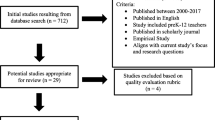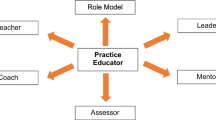Abstract
Although the AAMC requires annual reporting of medical humanities teaching, most literature is based on single-school case reports and studies using information reported on schools’ websites. This study sought to discover what medical humanities is offered in North American allopathic and osteopathic undergraduate medical schools. An 18-question, semi-structured survey was distributed to all 146 (as of June 2016) member schools of the American Association of Medical Colleges and the American Association of Colleges of Osteopathic Medicine. The survey sought information on required and elective humanities content, hours of humanities instruction, types of disciplines, participation rates, and humanities administrative structure. The survey was completed by 134 schools (145 AAMC; 31 AACOM). 70.8% of schools offered required and 80.6% offered electives in humanities. Global health and writing were the most common disciplines. Schools required 43.9 mean (MD 45.4; DO 37.1) and 30 (MD 29; DO 37.5) median hours in humanities. In the first two years, most humanities are integrated into other course work; most electives are offered as stand-alone classes. 50.0% of schools report only 0-25% of students participating in humanities electives. Presence of a certificate, concentration or arts journal increased likelihood of humanities content but decreased mean hours. Schools with a medical humanities MA had a higher number of required humanities hours. Medical humanities content in undergraduate curriculum is lower than is indicated in the AAMC annual report. Schools with a formal structure have a greater humanities presence in the curriculum and are taken by more students.
Similar content being viewed by others
References
AAMC. 2017. "Curriculum Inventory & Reports: Medical Humanities." Chicago, IL: American Association of Medical Colleges. Accessed June 27 2017. https://www.aamc.org/initiatives/cir/406462/06a.html.
Barzansky, Barbara. 2012. "Ethics and Humanities in Undergraduate Medical Education." Paper presented at the 2012 PRIME National Conference, Louisville, KY. https://itunes.apple.com/us/itunes-u/prime-2012-national-conference/id528385759?mt=10#
Berry, Sarah L., Erin Gentry Lamb, and Therese Jones. 2016. Health Humanities Baccalaureate Progams in the United States. Hiram, Ohio: Hiram College.
Bleakley, A. 2015. "Seven Types of Ambiguity in Evaluating the Impact of Humanities Provision in Undergraduate Medicine Curricula." Journal of Medical Humanities 36 (4):337-357. https://doi.org/10.1007/s10912-015-9337-5.
Bleakley, Alan, and Therese Jones. 2014. "A Timeline of the Medical Humanities" In Medicine, Health and the Arts: Approaches to the Medical Humanities edited by Victoria Bates, Alan Bleakley,and Sam Goodman, 281-283. New York: Routledge.
Calman, K. C., R. S. Downie, M. Duthie, and B. Sweeney. 1988. "Literature and Medicine: A Short Course for Medical Students." Medical Education 22 (4): 265-269.
Dittrich, Lisa R. 2003. Preface. Academic Medicine 78 (10): 951-952.
Evans, M., and D. Greaves. 2001. "Medical Humanities at the University of Wales Swansea." Medical Humanities 27 (1): 51-52.
George, P., Y. S. Park, J. Ip, P. A. Gruppuso, and E. Y. Adashi. 2016. "The Association between Premedical Curricular and Admission Requirements and Medical School Performance and Residency Placement: A Study of Two Admission Routes." Academic Medicine 91 (3): 388-394. https://doi.org/10.1097/ACM.0000000000000922.
Goodwin, D., and L. Machin. 2016. “How we Tackled the Problem of Assessing Humanities, Social and Behavioural Sciences in Medical Education.” Medical Teacher 38 (2): 137-140. https://doi.org/10.3109/0142159X.2015.1045844.
Graham, J., L. M. Benson, J. Swanson, D. Potyk, K. Daratha, and K. Roberts. 2016. "Medical Humanities Coursework is Associated with Greater Measured Empathy in Medical Students." American Journal of Medicine 129 (12): 1334-1337. https://doi.org/10.1016/j.amjmed.2016.08.005.
Hoff, G., N. J. Hirsch, J. J. Means, and L. Streyffeler. 2014. "A Call to Include Medical Humanities in the Curriculum of Colleges of Osteopathic Medicine and in Applicant Selection." Journal of the American Osteopathic Assocociation 114 (10): 798-804. https://doi.org/10.7556/jaoa.2014.154.
Klugman, Craig M. 2017. "How Health Humanities will Save the Life of the Humanities." Journal of Medical Humanities. https://link.springer.com/article/10.1007%2Fs10912-017-9453-5. Accessed. https://doi.org/10.1007/s10912-017-9453-5.
Klugman, Craig. M., Jennifer Peel, and Diana Beckmann-Mendez. 2011. "Art Rounds: Teaching Interprofessional Students Visual Thinking Strategies at One School." Academic Medicine 86 (10): 1266-1271. https://doi.org/10.1097/ACM.0b013e31822c1427.
Lam, Michael, Breanne Lechner, Ronald Chow, Leonard Chiu, Nicholas Chiu, Henry Lam, Marko Popovic et al. 2015. "A Review of Medical Humanities Curriculum in Medical Schools." Journal of Pain Management 8 (4): 289-297.
Perakis, C. R. 1989. "UNECOM's Humanities Program: An Education in Caring." Journal of the American Osteopathic Association 89 (3): 273, 276.
Perry, M., N. Maffulli, S. Willson, and D. Morrissey. 2011. "The Effectiveness of Arts-based Interventions in Medical Education: A Literature Review." Medical Education 45 (2): 141-148. https://doi.org/10.1111/j.1365-2923.2010.03848.x.
Self, D. J., D. C. Baldwin, Jr., and M. Olivarez. 1993. "Teaching Medical Ethics to First-year Students by using Film Discussion to Develop their Moral Reasoning." Academic Medicine 68 (5): 383-385.
Acknowledgements
I would like to acknowledge Alexa Zajecka for her assistance in designing the survey as well as Nicole Tolwin, MSN, RN and Joseph Reses, MD, MS for their assistance in statistics.
Funding
There was no funding for this study.
Author information
Authors and Affiliations
Corresponding author
Ethics declarations
Conflict of Interest
Klugman is a consultant for Otsuka Pharmaceuticals.
Ethical Approval
All procedures performed in studies involving human participants were in accordance with the ethical standards of the institutional and/or national research committee and with the 1964 Helsinki declaration and its later amendments or comparable ethical standards.
Informed Consent
Informed consent was not required for this study because it was determined to be exempt by the institutional review board. However, the first question of the survey presented information similar to what would be found on a consent document and asked the respondent to indicate if she or he agreed to participate.
Rights and permissions
About this article
Cite this article
Klugman, C.M. Medical Humanities Teaching in North American Allopathic and Osteopathic Medical Schools. J Med Humanit 39, 473–481 (2018). https://doi.org/10.1007/s10912-017-9491-z
Published:
Issue Date:
DOI: https://doi.org/10.1007/s10912-017-9491-z




